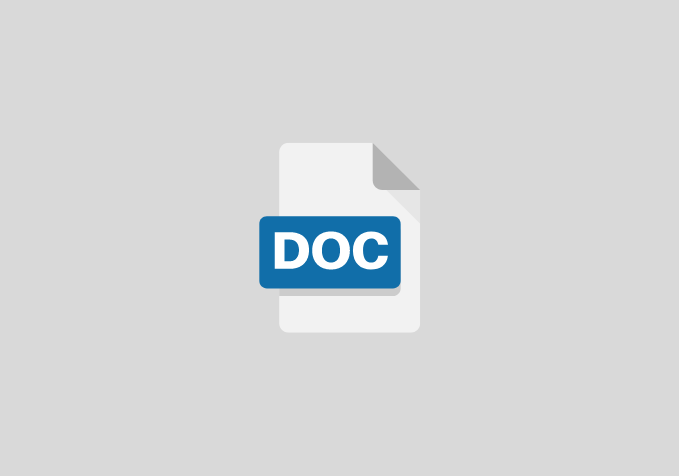The Effect of Dietary Intake of Moringa Leaf Water on Broiler Finisher Diet
CHAPTER ONE
OBJECTIVES
The objective of the study was to determine the:
- Proximate analysis of oleiferaleaf water.
- The performance of broiler finishers given different dietary levels of oleiferaleaf water.
- The carcass characteristics of broiler finishers fed different dietary levels of oleiferaleaf water.
- The haematological and blood biochemical indices of broiler finishers given oleiferaleaf water.
CHAPTER TWO
LITERATURE REVIEW
ORIGIN AND DOMESTICATION OF BROILERS
Broiler chicks (Gallus gallus domesticus), or broilers are gallinaceous domesticated fowl, bred and raised specifically for meat production (kruchten, 2002). They are a hybrid of the egg-laying chicken, both being a subspecies of the red jungle fowl (Gallus gallus). Typical broilers have white feathers and yellowish skin. Most commercial broilers reach slaughter weight between five and seven weeks of age, although slower growing breeds reach slaughter weights approximately 14 weeks of age. Because the meat broilers are this young at slaughter, their behaviour and physiology are that of an immature bird. Due to artificial selection for rapid early growth and the husbandry used to sustain this, broilers are susceptible to several welfare concerns, particularly skeletal malformation and dysfunction, skin and eye lesion and congestive heart conditions.
The domestic chicken descended primarily from the red jungle fowl (gallus gallus) and is classified as a subspecies (Gallus gallus domesticus) of that species. As such it can and does freely interbreed with population of red jungle fowl. The tradition poultry farming view is stated in encyclopaedia Britannia (2007): humans first domesticated chicken of India origin for the purpose of cock fighting in Asia, Europe, Middle East, and Africa, originating from the Indian subcontinent, where a large number of unique haplotypes occur. It is postulated that the jungle fowl, known as the “Bamboo fowl” I n many southeast Asian languages, is a pheasant well adapted to take advantage of the prolific reproduction of the jungle fowl when exposed to large amount of fruits that are produced during the end of the 50th year bamboo seeding cycle to boost its own production (king, 2009). Similarly, it is speculated the flexibility and adaptability inherited from the chickens red jungle fowl ancestors allow them to cope with the unnatural and intense conditions of modern production (Smith et al, 2014). Recent genetic analysis has revealed that at least the gene for yellow skin was incorporated into domesticated birds through hybridization with the jungle fowl (Erisson et al., 2008).
CHAPTER THREE
MATERIALS AND METHODS
Experimental site
This research was conducted at the experimental poultry unit of Imo State University Teaching and Research Farm Owerri. The climate data of Owerri are summarised by ministry of land and survey atlas of Imo State 1994 and 2004 as stated below. It is situated at latitude 5oN and 6oN, longitude 6oE and 7oE, mean annual temperature is about 26.5-27.5oC, relative humidity of about 75%-80%, annual rainfall between 200-248mm, soil type is sandy-loam in nature with average pH of 5.5mm(Acidic) (Ministry of land and survey,2004).
CHAPTER FOUR
RESULT AND DISCUSSION
Results
Proximate composition of Moringa oleifera leaf meal
The results of the proximate composition of Moringa oleifera leaf meal (MOL) are shown in table 1. The Moringa oleifera leaf contained 5.50 ether extract, 23.80 crude protein, 16.57 crude fibre, 9.75 ash, 38.63 nitrogen free extracts, and dry matter of 94.25.
CHAPTER FIVE
CONCLUSION AND RECOMMENDATION
The results of this study showed that:
Moringa oleifera leaf water (MOLW) could be included in broiler finisher water without any form of deleterious effect on the performance, carcass, haematology and serum biochemistry indices of the broiler birds.
Inclusion of Moringa oleifera leaf water as broiler finisher water reduced to a greater extent the risk at which the birds fall sick thus making them healthy.
It could, therefore, be concluded that Moringa oleifera leaf water can be used to replace synthetic antibiotic as growth promoter. An inclusion level up to 150g/20L of Moringa oleifera leaf water is recommended for an improve feed conversion because of the statistical increase in average weight change and average daily weight gain.
REFERENCES
- Abalaka ME, Olonitola OS, Onaolapo JA, (2009). Momordica charantia using W istar rats to determine safety level and usefulness of the plant ethnochemotheraphy. Int. J. Appl. Sci. 3:1-6.
- Abou-Elezz, F.M.K., L. Sarmiento-Franco, R. Santos-Ricalde and F. Solorio- Sanchez, 2011. Nutritional effects of dietary inclusion of Leucaena leucocephala and Moringa oleifera leaf meal on Rhode Island Red hens’ performance. Cuban J. Agric. Sci., 45: 163-169.
- Aiello, S.E., and Mays, M., (1998). The Merck-Veterinary Manual, 8th edition. Merck and company.
- AOAC (2000). Association of official analytical chemists. Official method of analysis. 17th edition, Washington DC.
- Barbato, G.F., 1992. Genetic architecture of carcass composition in chickens. Poult. Sci., 71: 789-798.
- Bell, G. H., Smile-Smith, D.E., and Patterson, C.R., (1972). Textbook of
- physiology and Biochemistry. Churchill, Living Stone Edinburg, Pp: 229-230.
- Bessei, .W. (2006). “Welfare of Broilers: A review”. World’s poultry science journal. 62:455-466.
- Chemical Diagnostic Division, 1990. Veterinary Reference Guide, Eastman Kodak Company, Rochester, New York.


